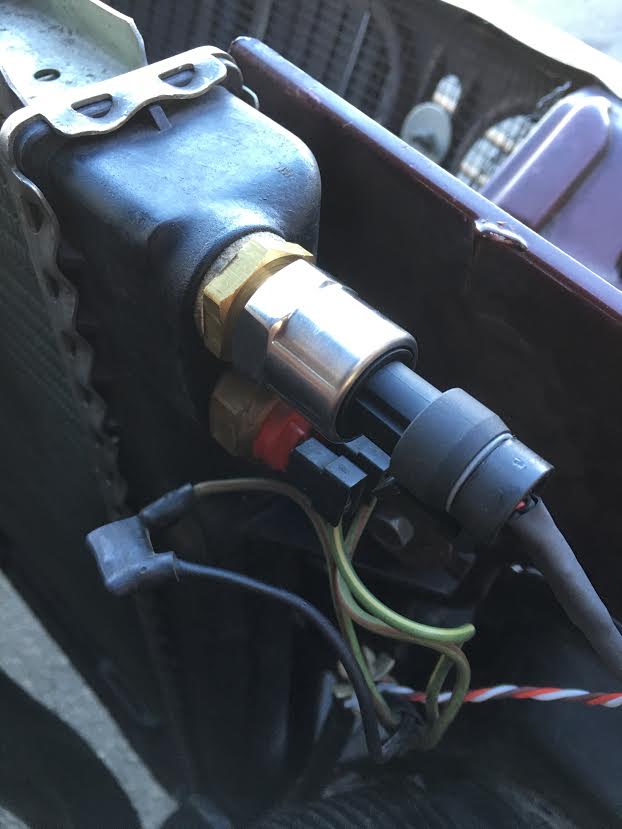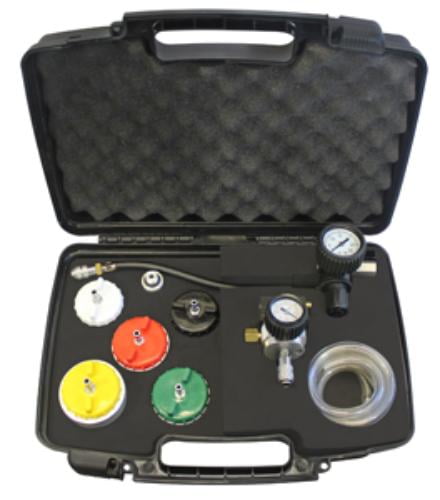

Once the car is actually cool and there is no pressure in your cooling system, you’re ready to expose the leak. If it’s easily squeezable, it means the system is not pressurized, but if you find resistance and feel like it’s expanded, then wait a little longer and try again. The first sign is a cool hose, then followed by how it feels. Grab the top radiator hose and squeeze it. If your car has been parked all night, you don’t have to worry about it, but if you’ve recently driven it, wait at least 1-2 hours before attempting anything. System Checkīefore jumping into pressure testing your cooling system, make sure your car is cool enough (or you’ll have bigger problems to worry about). While we always use PSI, you will notice that your Japanese car’s radiator cap has the maximum pressure in kPa, so this comes in handy to avoid having to convert it yourself. The pressure gauge displays pressure in PSI and kPa. Also included in the kit are three adapters to accommodate various fittings.

The kit comes with the pump and the pressure gauge attached to it. The boiling point is when the temperature at which the vapor pressure of liquid is equal to atmospheric pressure.īoiling point is lower than original boiling pointĬooling system pressure tester kits vary in price between $50 to $300. As the pressure increases, it becomes more difficult to move into the vapor. This increases the vapor pressure to equal or exceed atmosphere pressure, thus boiling the liquid. As temperature increases, additional particles have enough energy to enter the gas phase. Boiling Pointīoiling is the process in which molecules move from liquid state into vapor state. Since the system is pressurized, any leak in one of the hoses, radiator, or around the engine block could allow the coolant to boil causing overheating. Finally, the thermostat serves as the gate that closes when the engine is cool to let it warm up quickly, then opens up when the temperature reaches the optimal degree to let the coolant flow through and prevent overheating. If the pressure rises above the maximum level, the cap purposely vents to prevent a catastrophic disaster of built-up pressure with nowhere to go. The radiator cap keeps the entire system at a specific pressure, as it keeps the system closed to the atmosphere. It puts the coolant in motion as it flows through from the engine to the radiator and back into the engine in a cooler state. While the fan moves the air, the water pump moves the coolant. The fan assists in moving the air across the core of the radiator to assist with cooling. The radiator ejects the heat in the cooling system to the atmosphere, serving as a heat exchanger. Text by Bassem Girgis // Photos by Joe SingletonĪ radiator, a fan, a water pump, a thermostat, and a radiator pressure cap are partially responsible for the health of your engine. Here’s how you can check your cooling system and cross one item off your list of worries. That’s when a cooling system pressure test kit comes in handy. While you can visually see some leaks, we can’t rely solely on our eyes. A small leak in your cooling system could be the start of big problems and eventually complete engine failure if completely ignored. Since heat is the enemy of performance and reliability, the cooling system serves as the friend we all rely on and need. While our engines could provide us with plenty of power to put smiles on our faces, failing to address other systems that keep our engines running reliably could quickly eliminate these smiles. D uring the chase for more horsepower, we often neglect the rest of our systems.


 0 kommentar(er)
0 kommentar(er)
